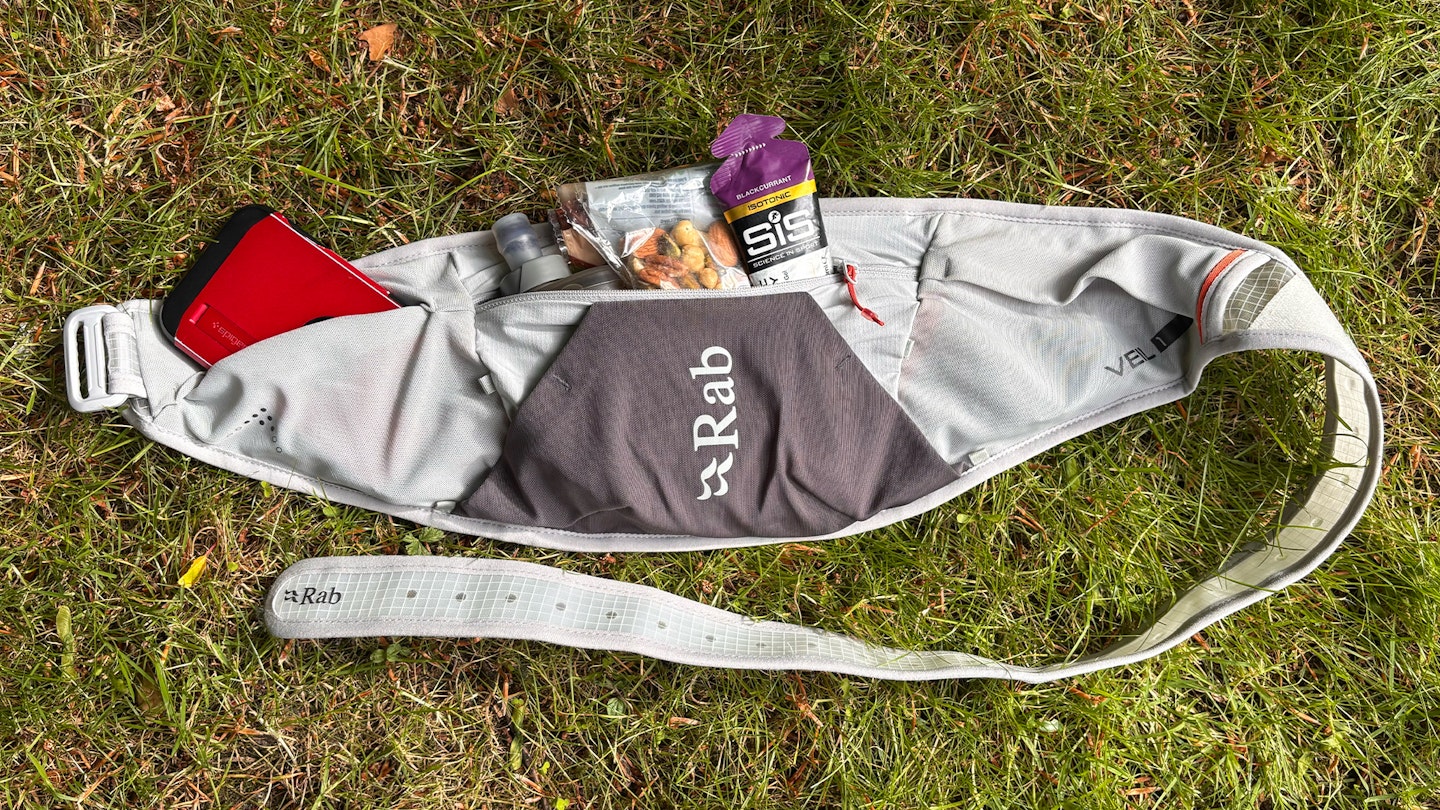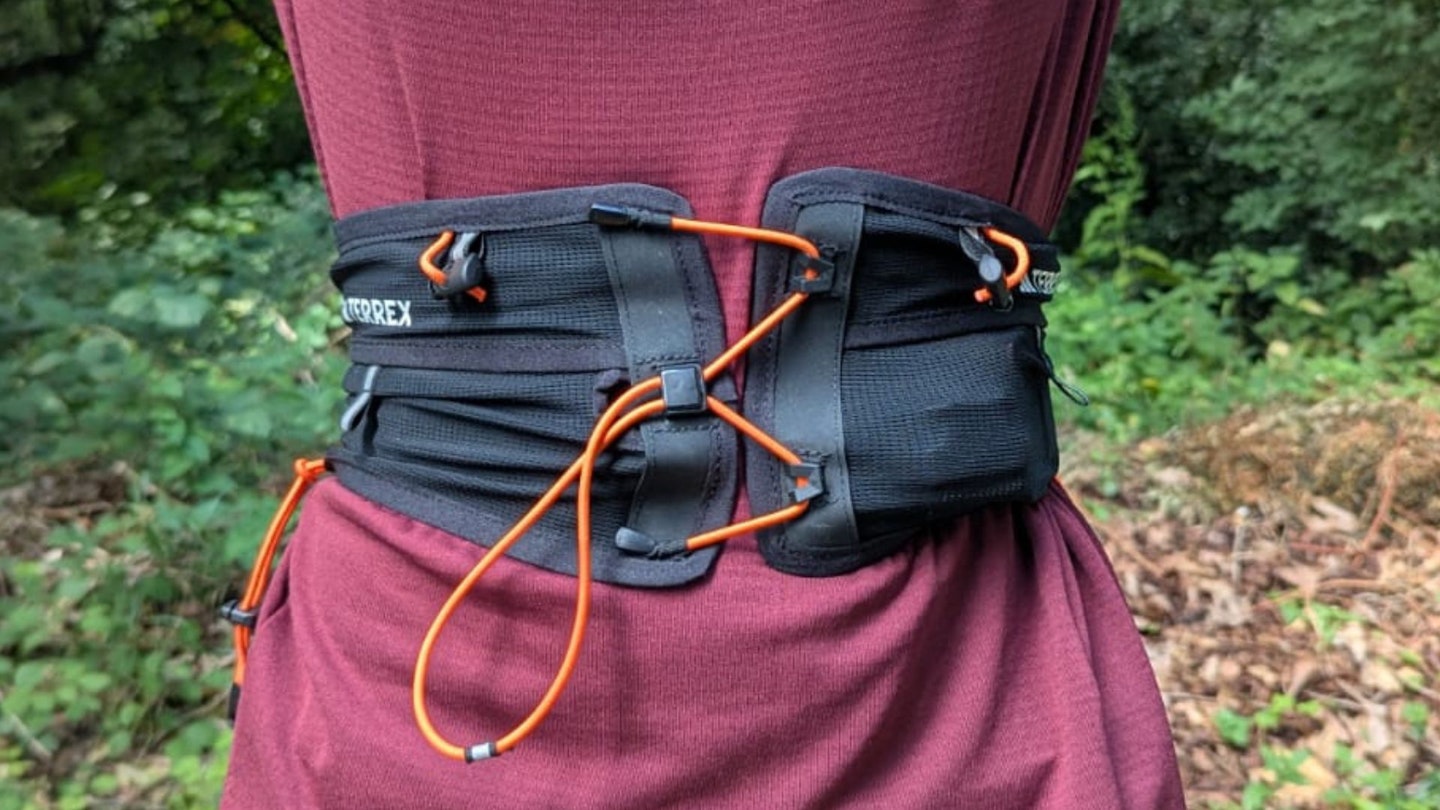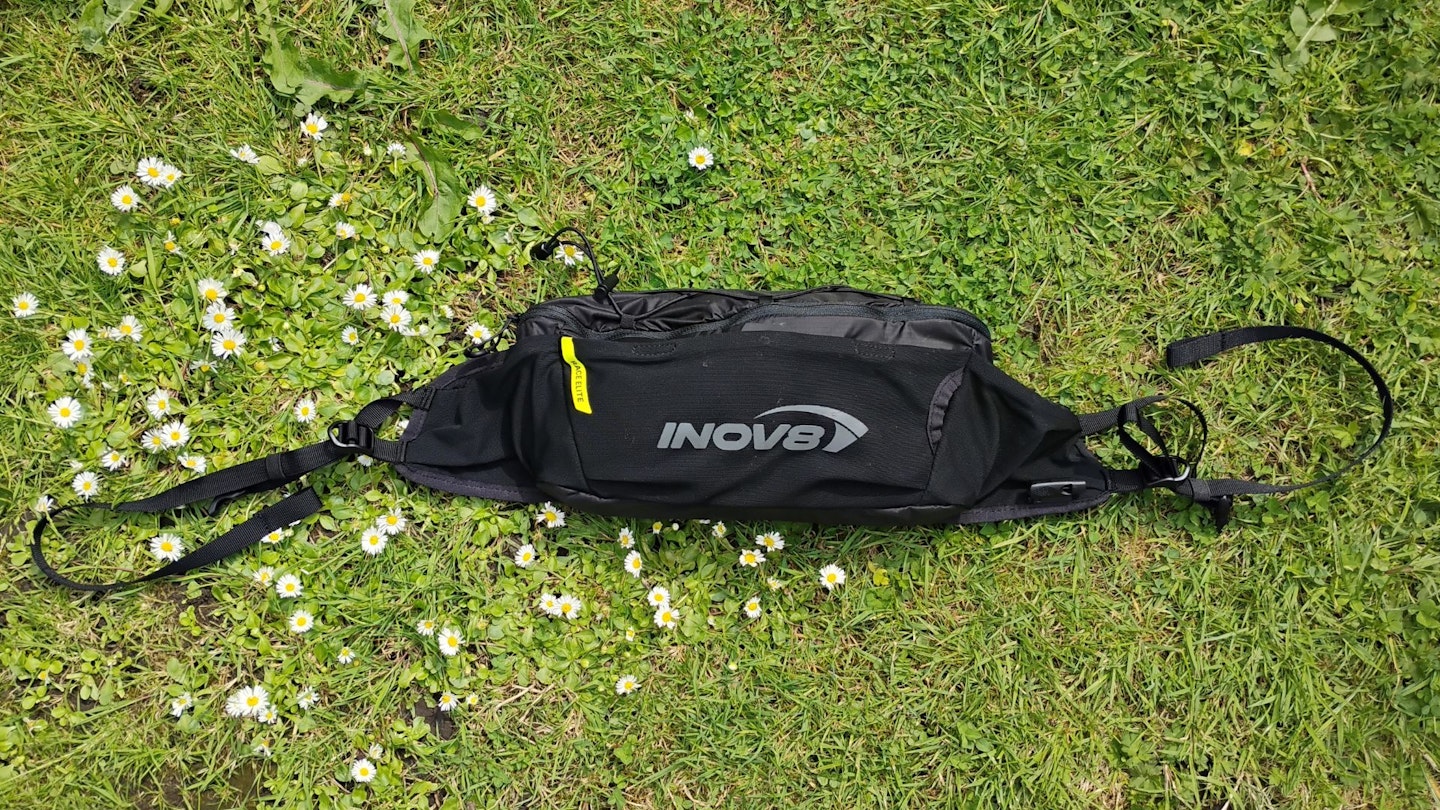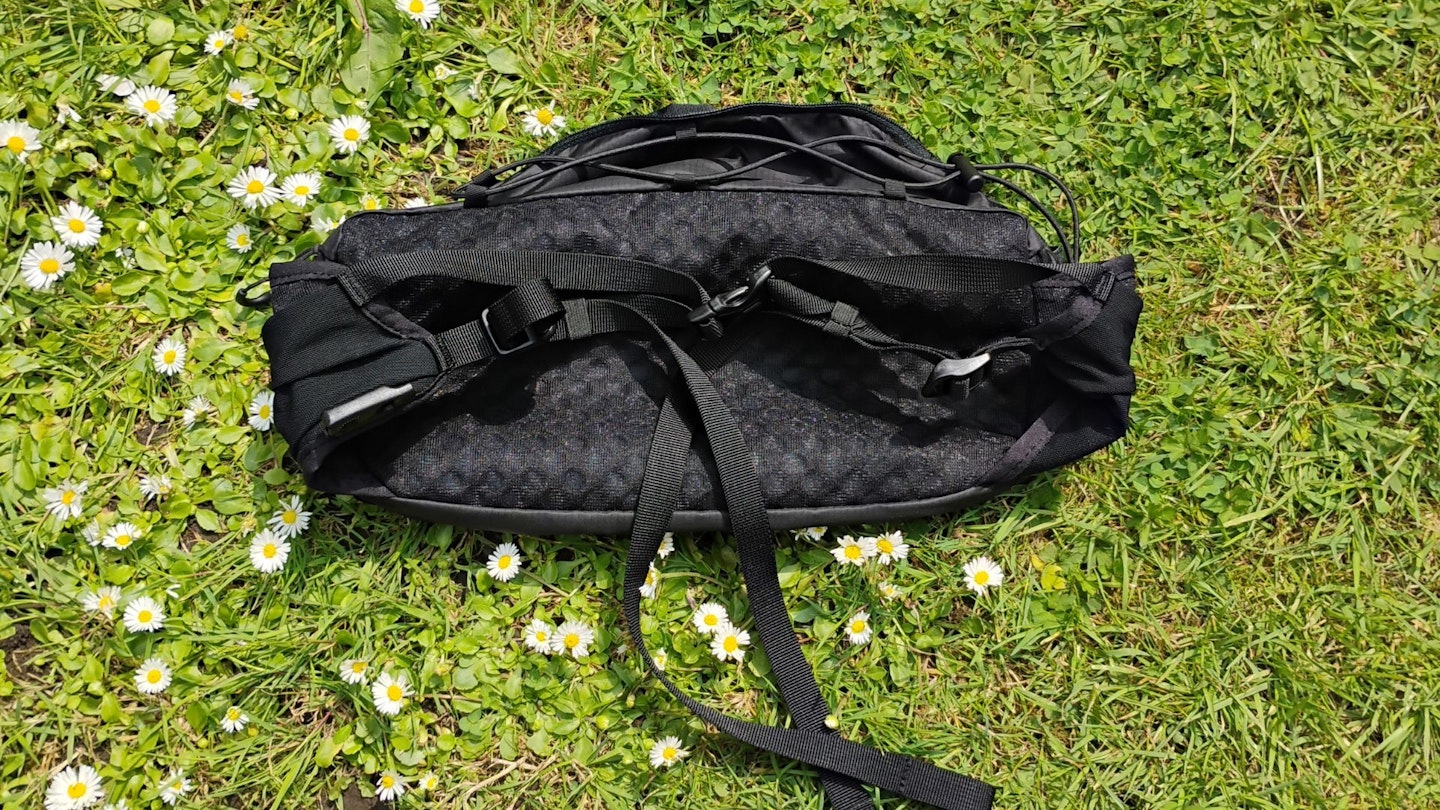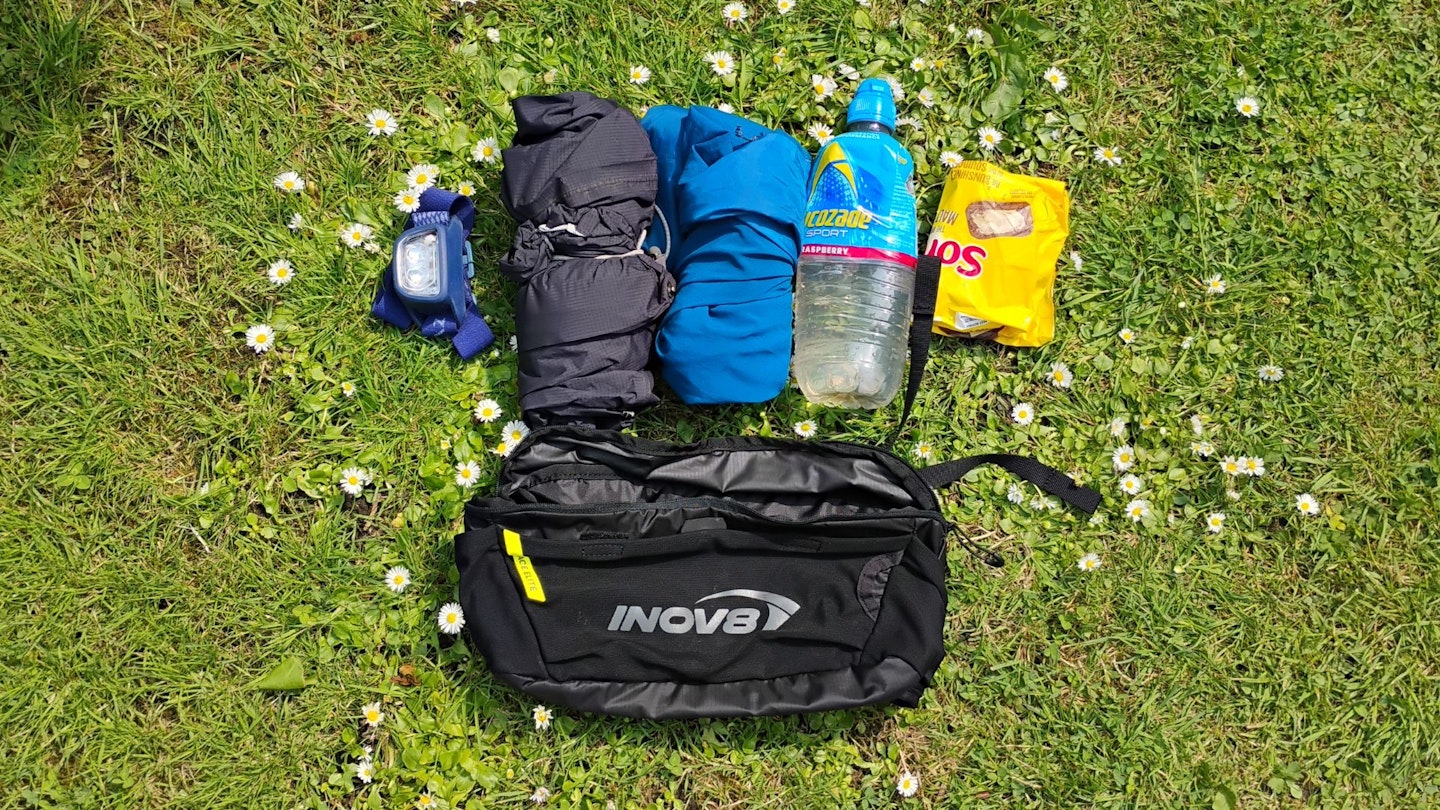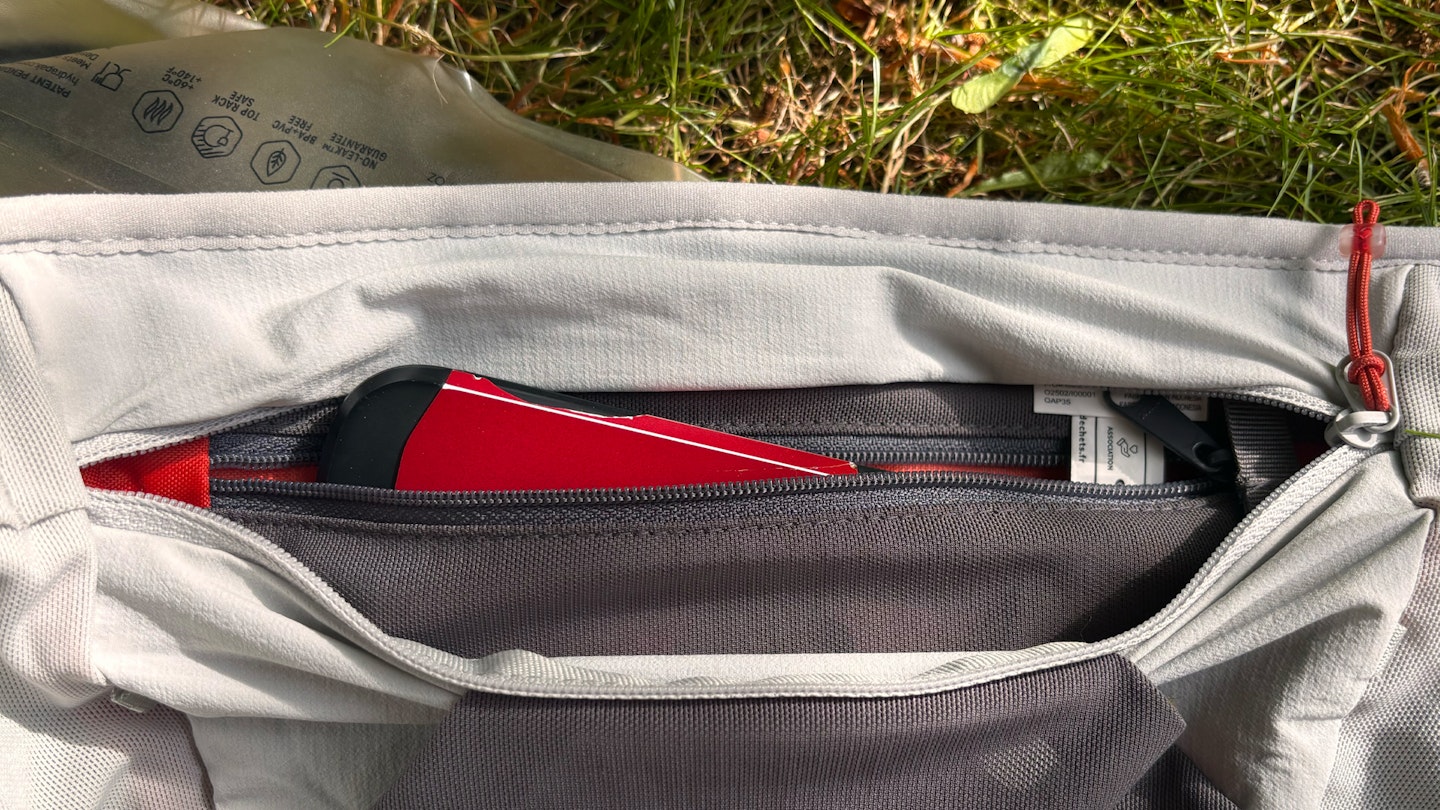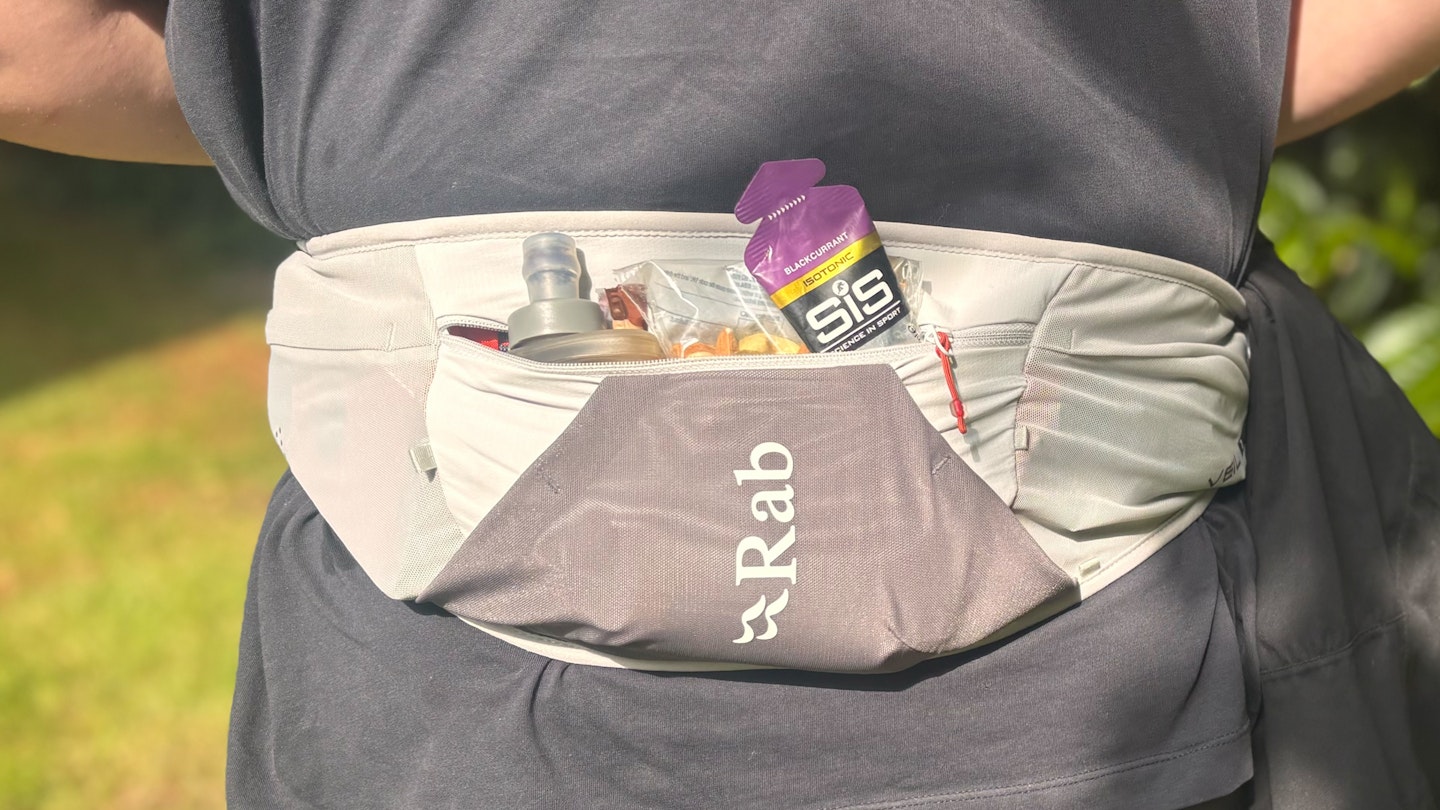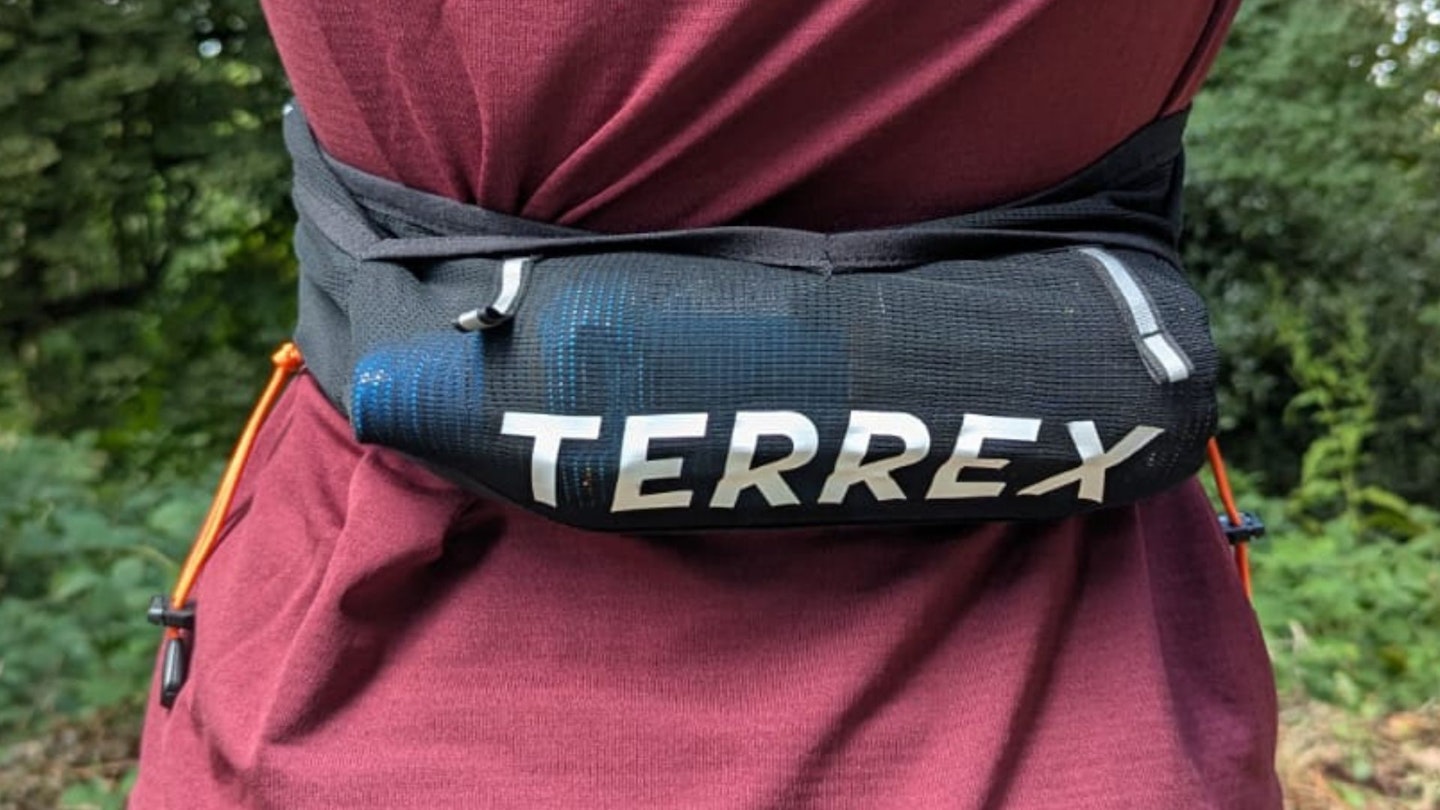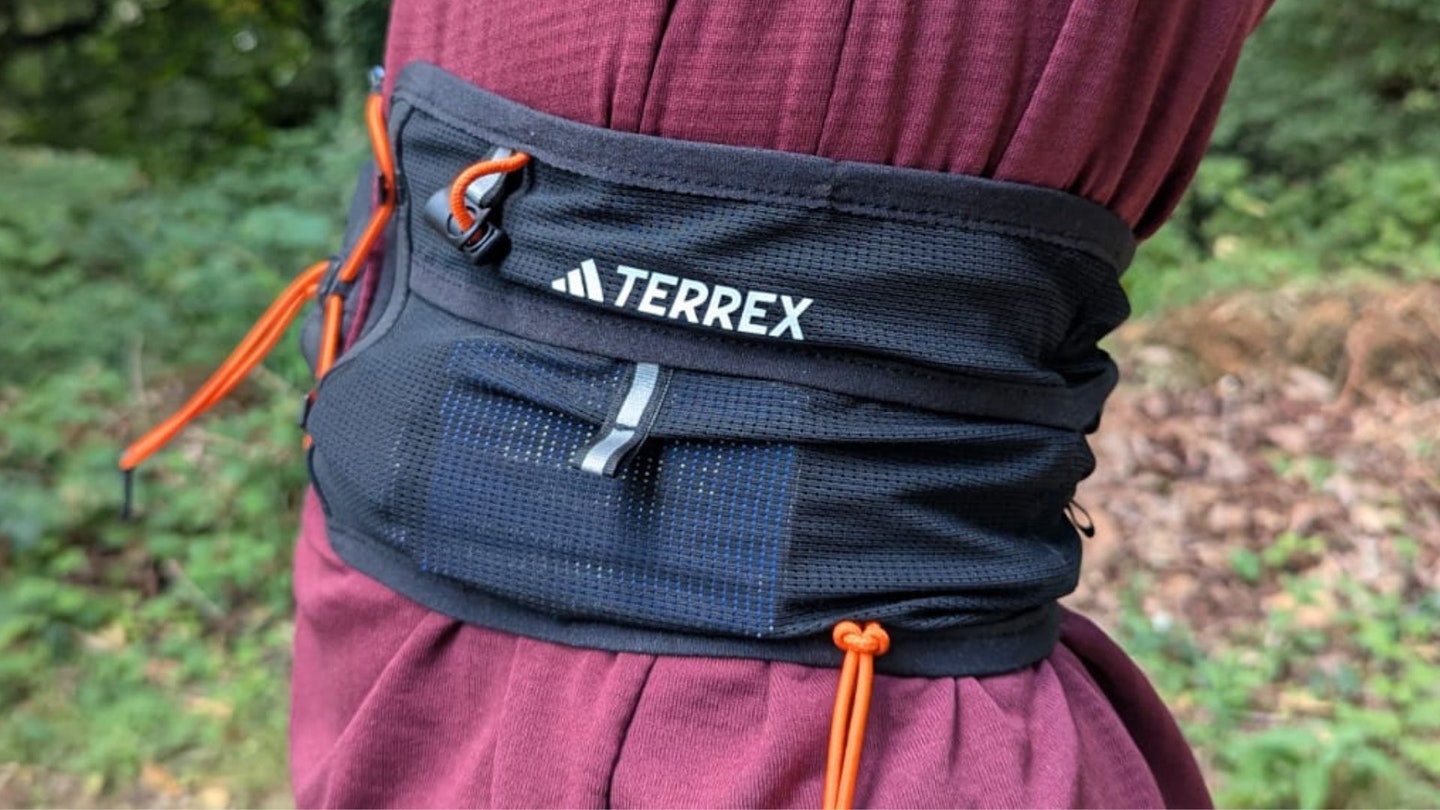A running belt or waist pack is a handy way to carry the kit you need with you as you run. If you don't like wearing a running pack on your back, or only need to bring a few items, then a running belt could be the perfect solution.
Running belts provide a means to comfortably carry your valuables and nutrition as you run. A good waist pack will offer plenty of storage with different sized pockets to stash items such as keys, money, a phone, and some gels or bars.
Some run belts will also have capacity to stash a run jacket and carry water, such as holders to fit small water bottles that you can fill with energy drink to stay hydrated on the go.
You might also choose to run with a waist pack if you like to carry your phone with you on your run for navigation or safety and your run shorts don't have suitable a pocket to secure it.
How we tested the best running belts
These running belts were reviewed by resident LFTO-testers Milo Wilson and Evie Nichols, over a period of several months. Neither can leave their trail running shoes alone for more than a day or two, so several months means many miles of testing.
Evie crammed them with snacks on trail runs in the Peak District, used them to store her phone and keys on weekday runs and even packed the larger ones with groceries and small parcels on the occasional errand run.
We tested these waist packs at a range of distances, from lunchtime leg-stretches to day-long slogs. This helped us to gain a full picture of how well these belts perform across four metrics: construction, comfort, performance and value.
By testing a wide range of belts side by side, we were able to compare them easily and make an informed decision about which one's best.
Curious as to how we get products in to review? Read more about how we test here.
What are the best waist packs for running?
Best in test: Salomon Pulse
Best for capacity: Inov8 Race Elite Waist
Best for quick access: Rab Veil
This stretchy waist belt from Salomon has two compartments: a zipped one at the front and a pouch at the back. It's deceptively spacious, as the stretchy compartments extend the whole way round.
I find that it fits a phone, keys, gels and soft flask comfortably. There's also back loops you can use to carry a pair of poles or another layer, so it'd work well for shorter races or in conjunction with a pack.
The compartments are easy to access, as the zip has a long cord and the back pocket a wide opening. However, it could be improved by including a smaller compartment or two – it can be tricky to access stuff that's been pushed into the middle.
It's very comfortable to wear. The fit is snug, but it doesn't limit breathing or ride up over time. It does a really good job of keeping everything contained, so there's no bounce.
If you like to take layers off and put them back on, you'll be grateful for the fact that this belt can discretely fit under your jacket. It also weighs an ultralight 62g, which is much lighter than most competitors.
Overall, the Pulse is so well-designed, it makes me question the need for larger packs when a stretchy, low-bounce belt can hold all the essentials more comfortably.
Pros
- Super comfortable
- Deceptively spacious
- Very lightweight
Cons
- No smaller compartment
| RRP: | £32/$35 |
| Weight: | 62g |
| Materials: | 62g/2.2oz |
| Capacity: | 0.79L |
| Pockets: | 1 zipped front pocket; 1 back pouch |
The Inov8 Race Elite is lightweight for its 3L capacity (110g). I'd say it's well-suited to summer fell races or long training runs.
There's a spacious main compartment, which easily fits my waterproofs, and two side pockets, big enough to stash a couple of snack bars in each. A bungee strap at the top is helpful for any loose layers.
The Race Elite also features a front compartment which fits a 500ml bottle. After a bit of practice, it was possible to get my bottle out without breaking stride, though I can't secure it properly without taking it off. The side compartments are easy to grab from, though they're quite small.
With three points of adjustment, at the front and both sides, it's easy to get the fit right. This also helps to reduce bounce. The straps are v-shaped, which stabilise the pack if properly adjusted. I found there was little bounce, even when it was almost full.
The straps are narrow, which helps to improve airflow, especially if they're positioned on the hips. As a result of this, I found I could comfortably cycle with this pack too – so if you're a runner-cyclist, it could kill two birds with one stone.
Read our full Inov8 Race Elite Waist review here.
Pros
- Limited bounce
- Lightweight for its capacity
- Breathable back
- Highly adjustable
- Good value
Cons
- A bit fiddly to get your bottle out
- Not suitable for kit-heavy winter races
- No zip pocket for valuables
| RRP: | £30/$30 |
| Weight: | 110g/3.9oz |
| Materials: | Polyamide and polyester (all recycled) |
| Capacity: | 3L |
| Pockets: | 1 zipped main compartment; 1 flask pouch; two side stashes |
This thing weirdly feels a bit like running vest but without the bulk or the sweaty back. The Rab Veil 1L is made from the same fabrics as the rest of their Veil running range, and it takes an ergonomic approach with large, flat panels and plenty of extra mesh pockets.
It’s a belt that isn’t afraid to carry weight, with a wide, flat chassis that spreads the load evenly and stays impressively stable even when fully packed. Whether you’re stashing a jacket, snacks, or a soft flask, this thing holds on tight and barely budges once adjusted.
We liked how secure the Velcro-style fastening felt, even if it’s not quite as quick to tweak mid-run as a traditional buckle system. That said, once it’s on, it stays put. Storage is definitely generous, with a zipped main pocket, internal valuables sleeve, and cleverly secure-yet-accessible mesh pouches that are great for gels or even a phone.
The build quality is excellent too – you get YKK zips, reinforced ripstop mesh, and Rab’s familiar featherweight materials from their running packs.
It’s not the lightest belt out there, but for longer outings or kit-heavy missions, the Rab Veil 1L nails the balance between capacity, comfort and security. A brilliant choice for runners who like to be prepared without committing to a full vest.
Read our full Rab Veil 1L review here.
Pros
- Exceptionally high capacity
- Comfortable when fully loaded
- diverse set of pockets
- Smart covering for mesh pouches
Cons
- A bit fiddly to adjust tightness
- Not as lightweight as other choices
| RRP: | £35 |
| Weight: | 101g / 4oz |
| Materials: | Main material: 100% nylon; Lining: 100% polyester; Chassis: Ripstop Mono Mesh (104gsm) |
| Capacity: | 1 litre (plus attachment points) |
| Pockets: | 1 YKK zipped main compartment; 1 zipped internal pocket; 2 mesh pouches |
The Adidas Terrex Trail Running Techrock Belt demands your attention with it's broad shape, large "TERREX" lettering and vivid orange straps.
Its key strength is an impressive 4.25L storage capacity at a remarkably low weight of just 85g. Three large compartments wrap around the belt, offering ample room for essentials like a soft flask, clothing layers, and snacks, with minimal bounce even when fully loaded.
The bungee-adjusted fit is highly adjustable, although the wide design can feel bulky and is less suited to shorter runs. While the quick-access pockets are handy, the lack of a zippered compartment is a drawback for valuables. Priced at £45, the Terrex Techrock is fairly expensive for a running belt, but this isn't surprising given it's capacity and weight.
After testing it for several months, my general sense is that it's best for ultras or big mountain days, but may be overkill for everyday training.
Read our full Adidas Terrex Techrock Belt review here.
Pros
- Very spacious for a low weight
- Limited bounce when full
- Highly adjustable fit
- Easy to access pockets on the move
Cons
- No zipped pocket
- Overkill for shorter runs
| RRP: | £45 |
| Weight: | 85g/30z |
| Materials: | 85% polyamide (recycled), 15% elastane |
| Capacity: | 4.25L |
| Pockets: | One main compartment: 24cm x 14cm; two side compartments: 21cm x 14cm. |
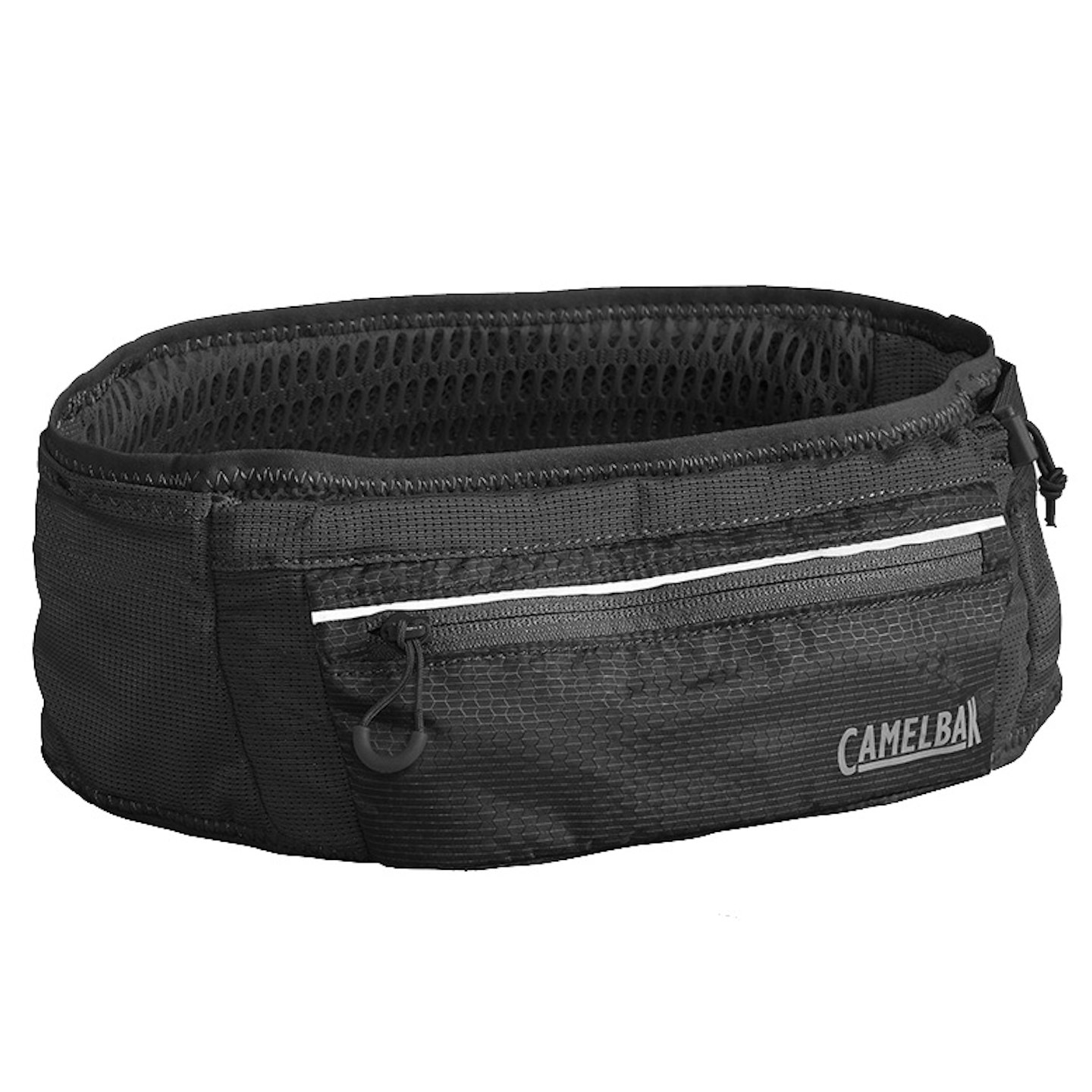
www.sportsshoes.com
A waist belt in this style allows you to carry all the essentials comfortably and unobtrusively without relying on your clothing’s pockets. The Ultra Belt features a large, zipped pocket, eight stretch pockets (two have elastic sinch cords) and elasticated loops to hold poles. It comes with one of the best 500ml soft flasks available. A simple and unobtrusive running belt which allows you to carry all the essentials comfortably.
Pros
- Simple
- Plenty of pockets
- Pole loops
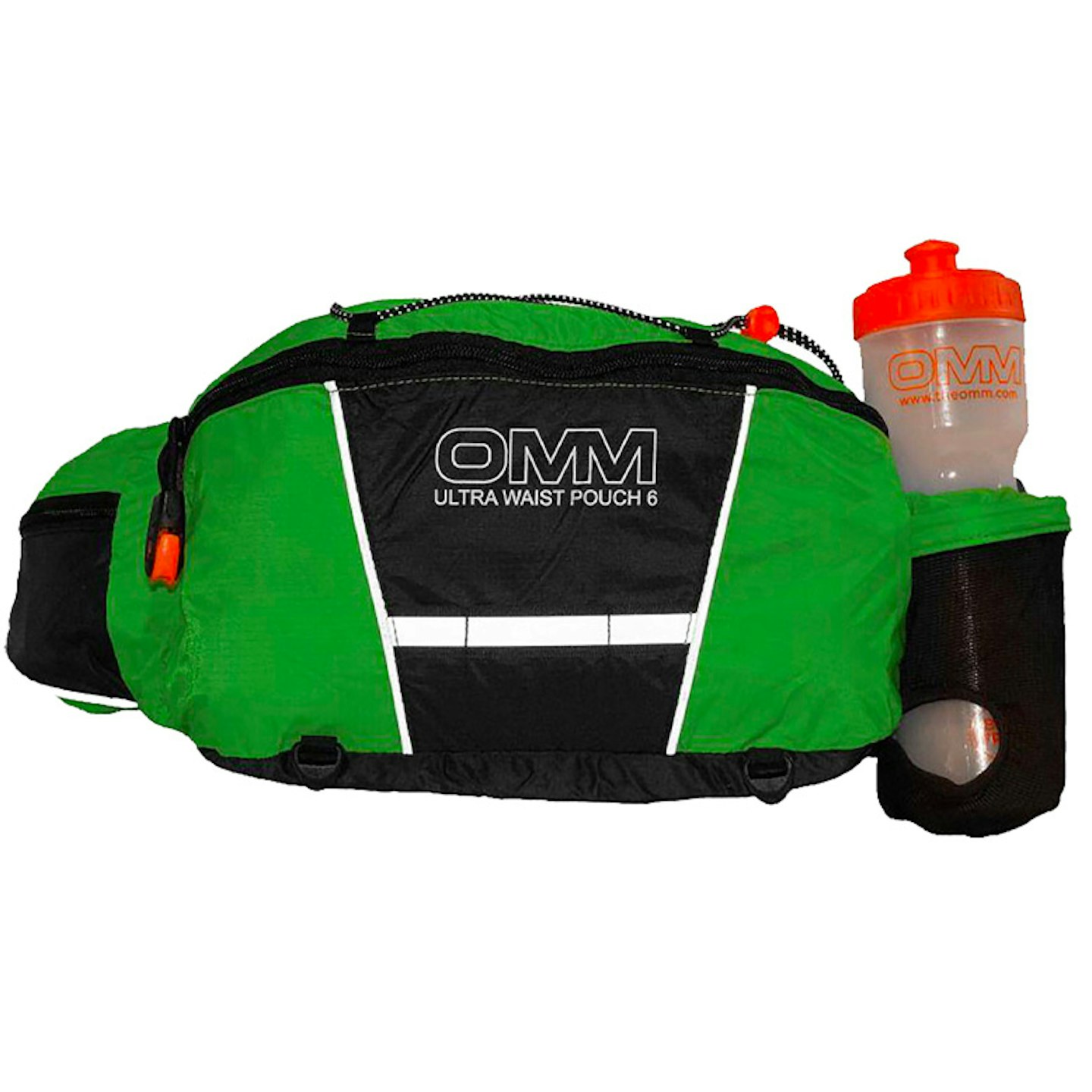
www.wiggle.co.uk
This larger capacity waist pack carries race day essentials without the weight or constriction of a pack. It’s cheaper than most vests, durable, well-padded and comfortable, but does bounce when it's loaded up. It’s well featured, with stretch and zip pockets and a bottle holster (750ml bottle included). All in all, the OMM Ultra Waist Pouch is a durable pack ideal for large storage needs and fell running.
Pros
- Durable
- Well padded and comfy
Cons
- Bounces when fully loaded
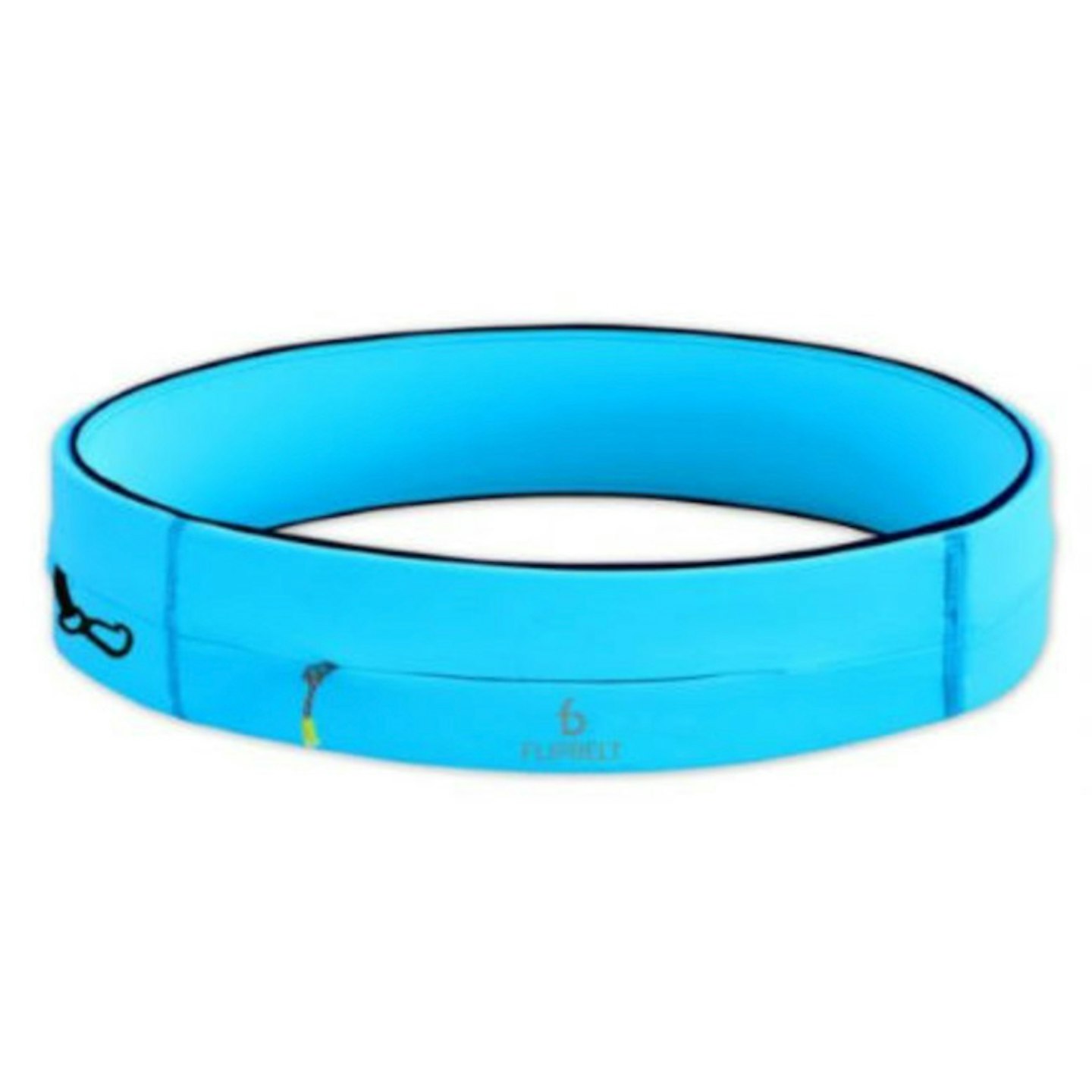
www.wiggle.co.uk
One of our go-to items of kit for daily training, running with the dog or supported races, this stretch-style belt combines superb comfort with ease of access in several small compartments around its length, one with a secure zip. Fits a smartphone, keys, gels, hats, gloves and anything else small and necessary. Well thought out belt, superb comfort and durability.
Pros
- Super stretchy
- Comfy
- Easy access pockets
Cons
- Pricey
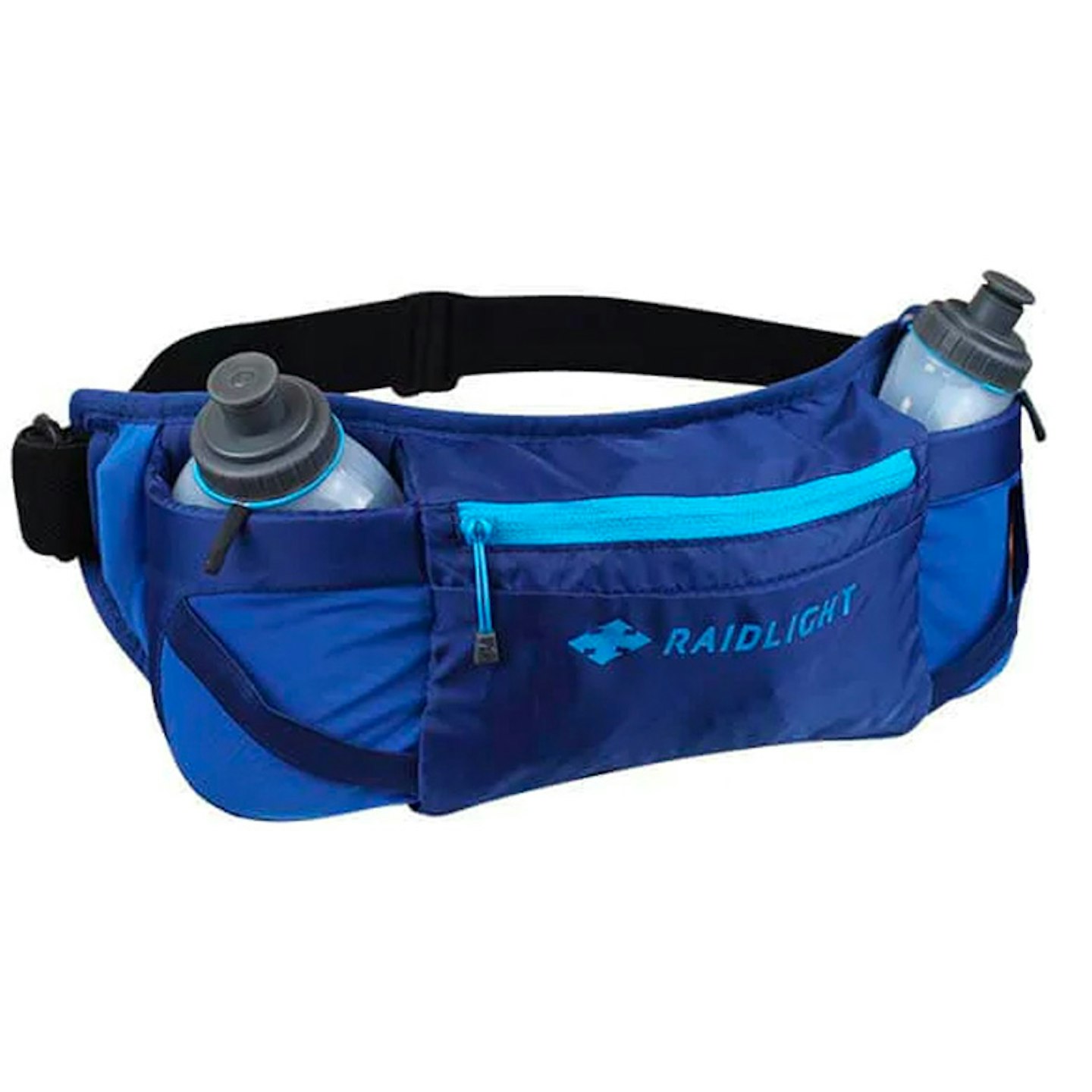
www.tradeinn.com
Light, comfortable and easily adjustable, with good, variable storage. The Raidlight waist pack is ideal for supported races, it carries two ergonomically-shaped flasks (included) or the mesh pockets double as extra storage. Elastic pole holders, plus zipped pocket offers safe stowing for a phone and other essentials. It’s a comfortable waistbelt and very stable, unless bottles are full which causes some bounce.
Pros
- Lightweight
- Adjustible
- Includes water flasks
Cons
- Some bounce when bottles full
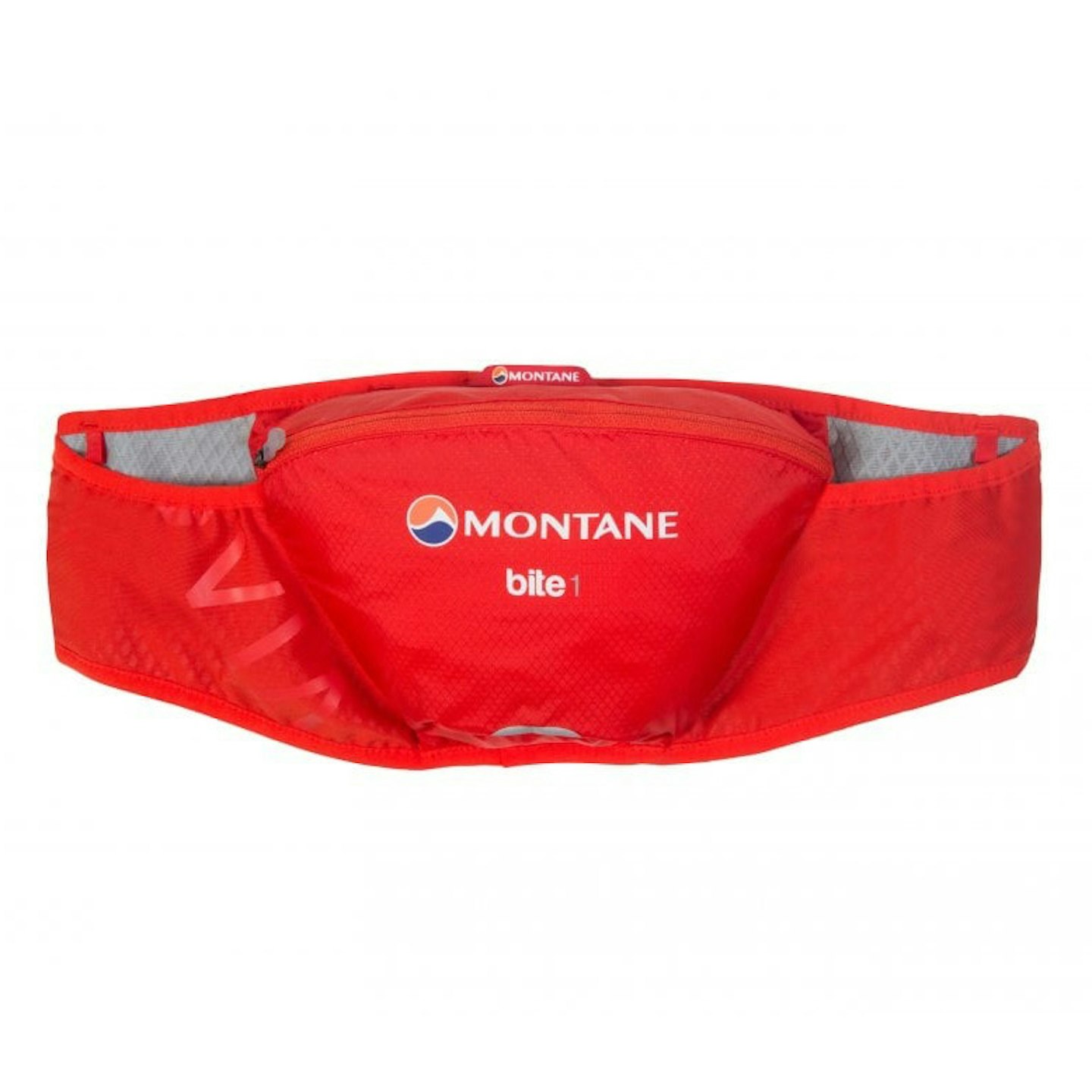
mountain-kit.co.uk
When you’re out for a shorter training run or a fully-supported race you’ll only need the minimum of kit. Montane’s brilliantly designed one-size waist pack has a 1L zipped main compartment – perfect for a jacket – and two good-sized mesh pockets for easy-to-reach items. The elasticated waistband with Velcro fastening means the fit is secure and comfortable. Great to run in – compact yet enough space for the basics.
Pros
- Large main compartment
- Secure fit

It’s not a new concept but – geez – is it handy! Nathan's stylish The Hipster is like a belt but boasts four stretchy pockets big enough to hold an iPhone 6+. We squeezed an iPhone 6 with a chunky Lifeproof case in ours! Leggings don’t always have useful pockets, so this is the perfect device for holding all the little things you want on your run, including extra gels, keys, the kitchen sink… They help hold your leggings up too – bonus!
Pros
- Stylish
- Four stetchy pockets
What to look for in a running belt?
Pockets: The main feature in a running waist belt is the storage capacity it offers. Make sure your belt has plenty of room for what you need to carry. That could mean a pocket large enough for your smart phone, a smaller pocket with zip closure for your valuables and space to stash food for refuelling on the move.
Adjustability: Choose a belt that's either incredibly stretchy and sits tight enough to you to reduce bounce, or one with straps that have enough adjustability in them to get the required fit.
Materials: Look at run belts with breathable materials and panels with ventilation as it's likely you'll work up a sweat with the belt sitting so tight to the body.
Safety: Some waist packs will have reflective strips or even a whistle for attracting attention in an emergency attached to boost your safety as you run.
What's the point of a running belt?
A running belt stores your essentials. So does a pocket, but a belt has much more capacity. Things won't bounce around in it. And a lot of running leggings or shorts, especially women's options, don't even have pockets.
For longer distances, a belt will not only take your phone and keys, but should also have space for a soft flask and snacks or gels. You might even be able to squeeze in a lightweight waterproof jacket.
What's better, a running belt or a vest?
This question divides runners. On the one hand, running belts generally have less capacity than vests. As a result, they're suited to runs where you don't have to carry much with you: short distances, races with aid stations, long runs with shops along the way.
Compared to a vest, a running belt might feel liberating. And with a low-capacity belt, you're encouraged not to over-pack, so they're good for fast and light running.
On the other hand, a running vest will generally carry a lot more gear: several layers, nutrition, more than 1 litre of water. They're usually more stable when full, so tend to bounce less – though your water might slosh around.



